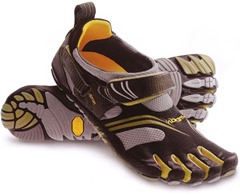 I just read an article over on the Natural Running Center website titled “Why Minimalism Went Flat.” The article, written by Jim Hixson, provides his take on the reasons behind the rise in maximal footwear and the decline in minimal footwear. Since I’m mentioned in the opening paragraph, I thought I’d share some thoughts on the article and the topic in general.
I just read an article over on the Natural Running Center website titled “Why Minimalism Went Flat.” The article, written by Jim Hixson, provides his take on the reasons behind the rise in maximal footwear and the decline in minimal footwear. Since I’m mentioned in the opening paragraph, I thought I’d share some thoughts on the article and the topic in general.
Hixson’s opening paragraph references my 2014 reader survey, emphasizing the point that four “maximally” cushioned shoes appear among the top 20 models. He then asks the following question “What happened with runners that made “fat and flat” shoes so popular, and in the process, push aside minimalism like some beefy schoolyard bully?”
Hixson makes some good points. For example, I agree that a lot of people who tried minimal went into it too fast and got injured in the process. Making a radical change in form or footwear requires a slow transition, and failure to do this is partly what led a lot of people to abandon minimal shoes. However, my major problem with the article is that it pits minimal against maximal and traditional shoes in a sort of us vs. them battle. I personally don’t see the need to polarize this debate any more. There is no convincing evidence that one type of shoe is better than any other, and in the absence of such evidence the best approach is to simply find what works best for you. Minimal, maximal, traditional, who cares? It’s just shoes, and being able to enjoy running is what it’s all about.
My personal feeling is that minimal went flat simply because people stopped buying minimal shoes. The reasons for this are probably many – people got hurt, minimal shoes last longer so you don’t need to buy them as often, Vibram Fivefingers were a funny-looking fad, running in minimal shoes really wasn’t the same as running barefoot. The fact is that if a product doesn’t sell, stores won’t carry it. If stores won’t carry it, companies will stop producing it. Simple as that. If everyone who went minimal had an incredibly positive experience, the trend would not have gone flat. Is there still a market for minimal shoes? Sure, and I hope they always remain an option since many people do genuinely run best in minimal footwear.
My own experience might be instructive here, and highlights why I still think the minimal movement was so important. I started running in 2007 and was told at a shoe store that I overpronate and thus needed stability shoes. I wore stability shoes for two years without issue, and in 2009 I started experimenting with minimal footwear after reading Born to Run. I ran quite a lot of miles in Vibram Fivefingers and minimal shoes like the Merrell Trail Glove. I had a very positive experience – I didn’t get hurt, I enjoyed running with less cushion, and I had fun experimenting with my form. But, perhaps most importantly, going minimal let me know that I wasn’t trapped in a life of stability shoes by my “diagnosis” as an overpronator. I was free to experiment, and I did. And in the process I was able to find what worked best for me.
Going minimal made me realize that I liked a wide toebox. I liked a flexible sole. I liked a lower drop. But I also realized that I liked a bit of cushion, and that I liked that cushion to be on the softer side. Not too much cushion, but just enough to provide comfort for long miles on the road. I found myself gravitating toward shoes like the Saucony Kinvara and New Balance 1400. Not minimal shoes, but not traditional or maximal either. I found a formula that worked best for me, and going minimal helped me to hone in on my sweet spot.
Minimal also led to experimentation by shoe companies and designers, and the outcome is that we now have an incredible diversity of shoes to choose from. Shoes like Hokas that combine aspects of minimalism with max cushion are part of that diversity. Just as I no longer feel pigeonholed into stability shoes, shoe walls no longer need to be organized into three narrowly-defined categories. There are tons of options available now, and this is a good thing. Minimalism was and is a good thing, it gave us the variety we have today.
In the past year I have run in Hokas, and I have run in a few traditional models. I liked the Hoka Huaka, but none are as good a fit for me as some of more trimmed-down models I have grown to prefer. That being said, I know lots of people who swear by maximal shoes like Hokas or the Altra Paradigm/Olympus. My wife went minimal and it didn’t work out well. She now runs in Hokas and cushioned Altras and is doing great. I know others who still swear by minimal shoes or barefoot. Different strokes for different folks – find what lets you enjoy running most and go with it.
Though I still appreciate a good footwear debate, and I enjoy following emerging science on the effects of footwear on things like form and running injuries, I honestly don’t think we will ever see any evidence supporting a single best shoe for all. It’s time to drop the us vs. them mentality when it comes to footwear and get back to just enjoying running.
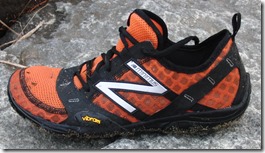
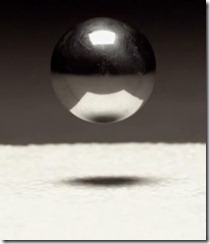
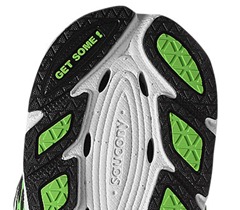

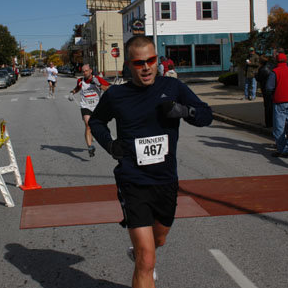














Well said Pete. I believe that the minimal shoe movement allowed/gave us permission to try different things to see what actually works for me, instead of being “locked” into a very narrow niche every time we walked into the local running store.
While minimalist running shoes (actually most racing flats too), do not work for me and how I want my shoes to feel when I run, they started me questioning what I wanted to run in.
There is way too much “gotcha” going on in the minimalist, maximalist, traditionalist camps that just get old and tired. Personally, I don’t care what you call the shoes that I wear, I just care whether they are working for me or not. I have found that many of the shoes you like also work well for me (though not always ;-) ), so we are all an experiment of one and we need to remember that.
Especially the experts in one camp or another, their way is not the only way that works for others.
We still having the debate because there are still many who evangelize that what works for them will work for everyone else and one size does fit all.
We still having the debate because many still misunderstand, misinterpret, misquote and misuse the research.
We still having this debate as pseudoscience, made-up-science and nonsense is being quoted.
We are still*********
Thank you for this nice article.
I think that every variety helps to run better and healthier.
You can run with bad form in any shoe. It seems like the debate, if there really is any, should be about how you run, not what you run in. Are there any aspects of running form that are controversial? That might be an interesting conversation.
Foot strike is certainly still controversial, but much like the footwear debate there isn’t much data to say any one foot strike is better than another.
I don’t know if there’s even much disagreement about form anymore. Pretty much everyone agrees that we should strive for a faster cadence with a foot strike landing under our center of mass without a severe heel strike. Nobody would recommend the heel to toe kind of running many used to advocate. Or are there some who still believe in that?
Everyone agrees that we should strive for a faster cadence? Faster than what? Whatever it is we have currently? And who is “we”? Are you suggesting that every runner in the world needs a faster cadence, or do some people have a fast enough cadence? If so, what cadence is fast enough?
No, plenty of people are just fine with their cadence. I’d say as a general rule of thumb that if you are running at a cadence of 160-165 or lower there may be some room to shift it up a bit. But then that also depends on typical pace since for someone running 10+ minute miles that cadence might be just fine. It’s more complicated than just saying everyone should increase cadence, depends on speed, body type, etc. I generally say to shoot for 170-190, but as always there are exceptions to every rule.
Not sure any side of any debate has a monopoly on the use of anecdote as a substitute for universal claims about the world(Those obsessed with pronation are just as annoying as the barefoot true believers). Sadly this approach to the world seems to be on the upswing in regards to lots of topics far more important than running shoes(see the latest national geographic). As long as science has existed many groups in society have tried to use it to sanction things that are “beyond debate” this has ranged from politics to gender roles and of course shoes. Sadly many misunderstand that science has nothing to do with being “right” and everything to do with an unyielding commitment to go where repeatable transparent experiments take you(along with healthy skepticism). Shoes represent the intersection of a highly profitable consumer product, fashion trends, and mainly industry funded “science”(I am referring to all styles of shoe minimal or traditional)…pretty sure that environment will always produce questionable results. As a result unless you suffer from some specific foot trauma that requires a particular shoe you might as well use anecdote in selecting what you wear on your feet. AS expecting some consensus to form I seriously doubt it will happen as the internet combined with confirmation bias and the dunning-krueger effect has basically eroded any source of authority to appeal to too form some sort of consensus. Just think the entire anti-vax movement is based off one discredited/redacted article from 1998 and that is starting to have public health consequences but their are still lots of recalcitrant folks out there. Running like anything else will continue to be subject to an endless flow of controversies because that is what people find “interesting”. A measured response to new things may appeal to academics but “clicks” or page views are not driven by measured responses. But hey at least we have your blog!
Well said Kev!
Minimalism is not dead. I was today on national tv in Luxembojrg promoting xero sandals and toe socks from Knitido.
Well said. Personally, for me the minimalism thing opened up a whole new world of running experiences, and helped me escape some nagging underfoot/knee problems. These days, I believe in the right shoe for the job, being that a short run on a flat road or some long mountain run on rocky grounds. I currently have 20 pairs in active rotation and love the choice…
20 pairs is a great rotation :)
Minimal, maximal, zero drop, whatever! Just don’t try and tell me that my blue and black Altras are actually white and gold!
Good article BTW.
I saw both colors on different devices :)
Hi Pete,
I think that I have found ‘what works for me’ – That being a light and fairly stiff shoe. I have liked the stiffness in a lot of Adidas shoes and want to try the boost and it seems that the Takumi Sen 3 Boost has all those qualities: Light, Boosted, stiff. Could you do an impressions or a review as I haven’t seen an reviews of it so far- it is no where near as marketed as the Ultra Boost.
Cheers,
Henry Hart
Unfortunately I don’t have that one. Like you, I’m very tempted by it as it looks like a great match for me, but the price tag is a bit on the steep side :)
So are you not going to review it?
Not sure yet, might have a guest review, or I might cave and buy a pair. Depends on whether temptation gets the better of me!
I do not understand why running shoe manufacturers cannot consistently design and market a basic neutral light weight trainer somewhere between the polar opposites year after year. It’s expensive, frustrating, and time consuming to have to experiment every eighteen months.
I agree. Once you find something that fits well and works for you, the industry turns around and pushes out a whole new different crop of products that for the most part sway away from what you chose. A consistency of models for all groups would be appreciated.
Great blog! I am a Barefoot true believer because my feet are size 7 womens in length and mens 13E width… yeah. I swim great!! Any suggestions for where to still find barefoot shoes for kids? We have Vibram, need Merrell barefoot trail glove for kids…? Other comparable zero drop wide toe box kids shoes?
Not a lot of options out there any more – I have gone mostly with the Merrell Trail Gloves or Altra Instinct Jr’s for my kids.
Great post. I’ve moved from stability shoes to neutral light weight trainers for every day runs and flats for interval sessions. I agree everyone has to find what works best for them.
Great article . In a physio and run barefoot but I don’t think I’ve advised anyone to run barefoot . It took me over a year to get comfortable but I’ve learnt so much about shock absorption on that time and my firm had improved greatly and all my injuries too. There is a place for the right array of shoes fir different people as well as introducing greater exposure to choice , something that was lacking in the past, including brands as an alternative. Good girm with a shoe that will allow you to achieve this that’s what makes the difference . For me as a professional it made sense to go barefoot as I wanted to experience what my foot was capable and I’ve improved far more in that way than I would have shod . It was slow far slower than any if my patients have patience for. Horses for courses. Great article
Great article . In a physio and run barefoot but I don’t think I’ve advised anyone to run barefoot . It took me over a year to get comfortable but I’ve learnt so much about shock absorption in that time and my form has improved greatly and all my injuries too. There is a place for the right array of shoes for different people as well as introducing greater exposure to choice , something that was lacking in the past, including brands as an alternative. Good going with a shoe that will allow you to achieve this, that’s what makes the difference . For me as a professional it made sense to go barefoot as I wanted to experience what my foot was capable and I’ve improved far more in that way than I would have shod . It was slow far slower than any of my patients have patience for. Horses for courses. Great article
Sorry but I still think that the shoe companies (and generally the fashion industry) have us by the balls. It took me three years to switch to barefoot but now I have the perfect shoe, my feet!
I really think this is a golden age for running shoes. There is a shoe type for everybody! Remember what it was like 15 years ago? The stability obsession was at it´s worst. Even shoes that was marked as neutral were fairly heavy and had these plastic pieces everywhere.
Good information. I don’t think it was Vibram’s fault people got hurt. I think people tried too much too fast as you said.
Great article Peter and some great replies too! After reading Born to Run and rethinking running form as my son’s XC coaches were beginning to teach mid-foot strike form, I decided to try a different shoe and experiment with mid-foot strike and cadence and see what came of it. Being an overweight, overaged, plodding heel striker prone to plantar fasciitis, it was a radical change to go from stability shoes and orthotics to Nike Frees. Somewhere along the way I realized that not only was I not feeling more foot pain but that my plantar fasciitis was gone! Its been 2.5 years and the Free 5.0s work great although I agree they could use a wider toe box. When I started on this experiment I assumed, because of the strong minimalist opinions on the web, that Nike Free 5.0s were just a transition to something more minimal but have found I’m quite happy in that transitional range of shoe. I might try the 4.0s because of the wider toe box you mention in your review but now don’t feel compelled to strive for the zero drop shoe experience that true minimalists promote. I’ll continue to read your reviews as I would also like to find a shoe better suited for speed work but with a similar feel to the Free.
Thanks Steve – and you’re right, there’s no real goal or target other than finding what works for you.
One thing that the industry MUST change, regardless Maximalist or Minimalist or something in between, a foot shaped toe box. Altra and Topo are on the right track with that. Merrell is falling back as is New Balance. The majority of brands still have a narrow pointy toe box which makes no sense.
Great post! I know you wrote this a while ago but I’ve just been researching maximal shoes and I came across this. I totally agree that a certain shoe type is all too often prescribed as the magic fix all – but in reality as we’re all individuals there’s never going to be one type that is the ‘best’. I’ve been wearing Brooks Cadence for 3 years, and been dabbling with New Balance Minimus for short runs, just because I like the feel of them. I know that conventional wisdom tells me that a flat footed, heel striking mild overpronator shouldn’t be wearing these – but I’m doing all right and am injury-free (so far). I’ve had the opportunity to try out a pair of Hokas so will be interesting to see how I fare in those.